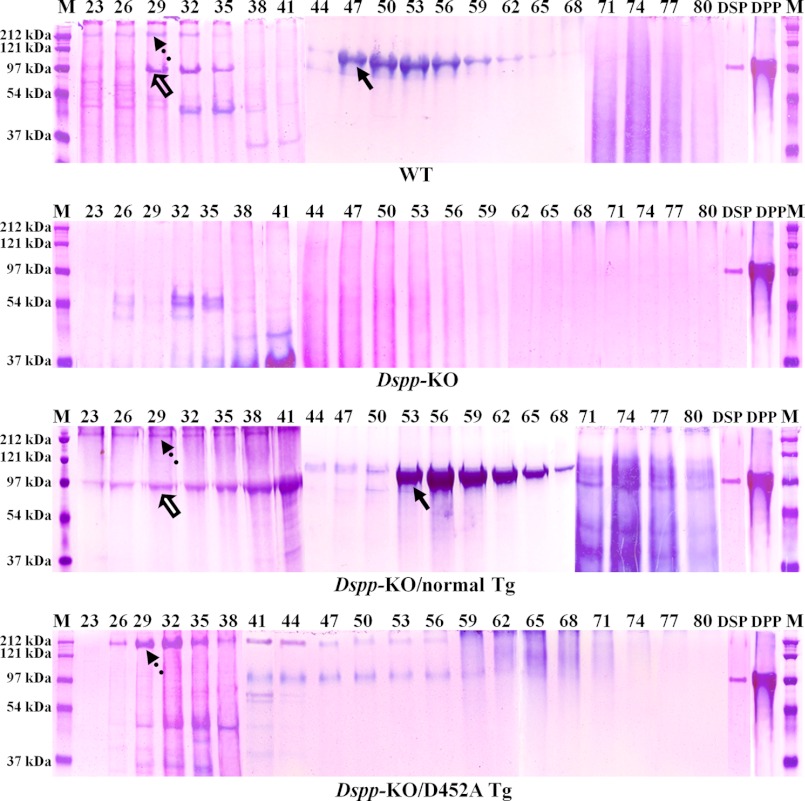FIGURE 2.
Stains-All staining of acidic proteins (stained blue or purple) in the NCP extracts from mouse dentin. The NCPs were extracted from the dentin of 3-month-old WT, Dspp-KO, Dspp-KO/normal-Tg and Dspp-KO/D452A-Tg mice. The extracted NCPs were separated into 118 fractions (0.5 ml/fraction) by a Q-Sepharose ion-exchange column; the digits on the top of each image represent the fraction numbers. 60 μl of sample from each of the fractions that potentially contained DSPP-derived products was loaded onto 5–15% SDS-PAGE. The dotted arrows denote DSPP, while the hollow arrows indicate DSP; their identities as DSPP and DSP were confirmed by Western immunoblotting (see Fig. 3). The major blue bands in fractions 47–65 in the WT and Dspp-KO/normal-Tg mice (solid arrows) was primarily made of DPP, although these bands also contained a small amount of bone sialoprotein (BSP), which was confirmed by anti-BSP Western immunoblotting (data not shown). It should be noted that no anti-DPP antibodies are available to detect DPP in Western immunoblotting analyses. Note the abundance of DSP and DPP in the samples from the WT and Dspp-KO/normal-Tg mouse incisors as well as the large amounts of full-length DSPP in the samples from the Dspp-KO/D452A-Tg mice. M, molecular weight standard; DSP, pure DSP isolated from rat dentin; DPP, pure DPP isolated from rat dentin.

